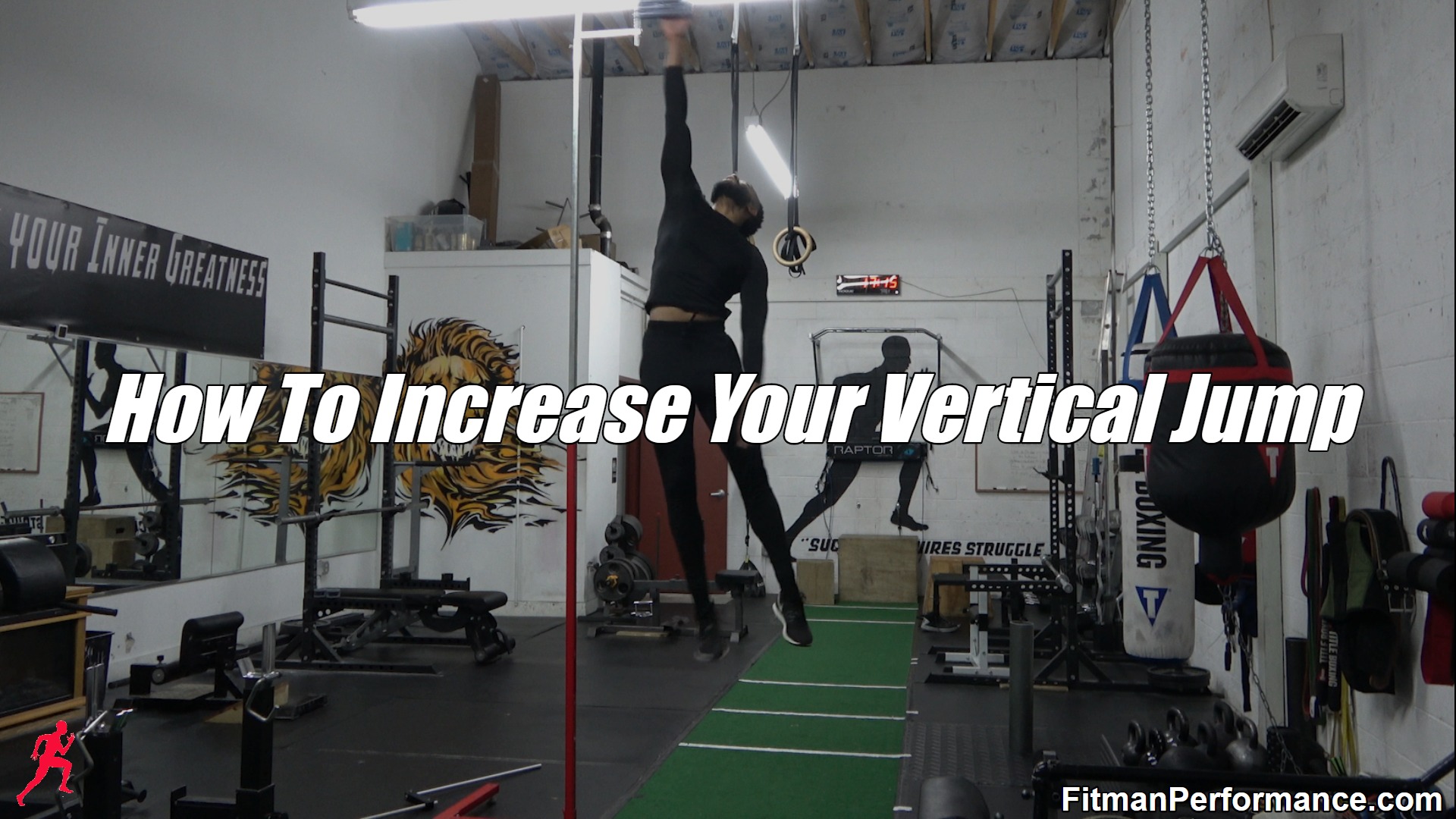Increasing your vertical jump is another element of training that has been bastardized over the years.
Some coaches say it is all about getting stronger in the weight room. They theorize that the man with the biggest squat or deadlift will have the highest vertical.
You even have some “coaches” promoting gimmick items like Jump Soles that offer big results but always under-deliver.
I actually had a pair of these Jump Soles back in college.
They did not do anything to increase my vertical jump but they did absolutely decrease my already light wallet at the time.
So the big question is this: what will actually work to increase your vertical jump?
Age Has Not Cost Me My Power
I was able to increase my standing vertical jump from 28 inches in 2017 to 33.5 inches at the age of 34 in 2018.
I also increased my max vertical jump from 31 inches to 36.5 inches.
As a result, this meant touching 10’5″ on the Vertec in the standing vertical and 10’7.5 on the Vertec in the max vertical.
I haven’t tried yet, but I believe I can DUNK again!
The standing vertical result would of placed me 26th at the 2018 NFL Combine among the 44 wide receivers who participated.
These guys would all run complete circles around me in terms of football, but jumping is a different deal.
The max vertical result would of placed me 19th at the 2017-2018 NBA Combine among the 53 players who participated.
These guys would also make me look awful in terms of basketball, but again, jumping is a different ballgame.
These numbers are excellent for a now 36 year old man who is supposed to be past his prime if you ask certain people.
What was my secret to increasing my hops at an age when most athletes have lost significant amounts of power and are rapidly fading out of their prime?
The secret is to prioritize jumping and believing in your ability to succeed.
Prioritize It
In order to get better at jumping higher you have to put a priority on jumping higher.
In other words, to get better at the thing, you have to do the dang thing.
As stated earlier many coaches say strength alone can get the job done but they are not correct. Getting stronger by lifting weights will help but weights alone will not do it.
During the time (2010-2016) in which natural bodybuilding was my primary endeavor, I could squat 335lbs to the bucket, deadlift 465lbs, hip thrust 669.5lbs, and do the absolutely absurd lunges of death.
My rep numbers were also fantastic in this era as I could squat 275lbs to the bucket for 9 reps, deadlift 405lbs for 8 reps, and do barbell walking lunges with 315lbs for 6 reps.
All of this was happening at a bodyweight of 162-170lbs.
My legs were made of steel but when I tested my vertical jump in February 2017, it was a lousy 28 inches.
I could not even touch 10ft on the Vertec which is the equivalent to a basketball rim. My highest for the day was about 9’11 or 9’11.5.
I was highly disappointed and embarrassed but looking forward to another challenge. Touching rim (10ft) has always been my personal standard for a male athlete who is almost 6ft tall.
My weak numbers were of no surprise as I had no jump training in my program.
I promise you the great Allen Iverson could not squat 275lbs to the bucket but he had ridiculous, otherworldly hops. So you have to jump.
Adding jumping to your program is not difficult. For 2-3 days per week, you will start your workouts with jump training.
The jumps below are the main ones that will add inches to your vertical:
• Max effort jumps with no run up
• Run up max effort jumps
• Max height single leg jumps
• Run up single leg jumps
• Seated jumps for max height
• Run up high barrier jumps
What you also must know about jump training is that when you prioritize it, you will need to put some other aspects of your training on maintenance mode.
Nobody can increase all their attributes at once without absolutely eviscerating their CNS.
While you are focusing on jumping higher it would be a great time to reduce the overall volume of some other lifts, especially your lower body lifts.
How To Increase Your Vertical Jump Workout
Jump training, just like sprinting and heavy lifting on specific moves like squats and deadlifts utilize the CNS (central nervous system) as their main form of energy.
As a result, a fresh CNS will always lead to a better jump performance during training.
Here are a few of the keys that will have you jumping higher:
• To keep your CNS fresh during this jump priority phase you will jump 3 days per week. Your jumping intensity will be high but your jumping volume will be controlled to prevent overtraining.
• Your maximum jump workouts will be performed with at least 72 hours of recovery between workouts.
• You will take plenty of rest (30-45 seconds) between your max effort jumps to keep the quality of the jumps high. This is not a conditioning workout so do not do your max effort jumps with incomplete rest.
• There will be a lower intensity jump day between the maximum jump workouts that doesn’t require you to jump for maximum height. This day is here to keep you in a jumping rhythm.
• At no time will you be maxing out or lifting very heavy because heavy squats and deadlifts tax the CNS just like jumping does.
• Your lower body lifts will be around 75-85 percent (relative after the jumps) of your maximum.
Sample Jump Priority Program:
Notes:
• You will need a Vertec and a barrier like hurdles to maximize this workout.
• Test your standing vertical jump (no step) and your maximum vertical jump (3 step) on the Vertec before beginning the program. Re-test them at the of the 6 week cycle.
Sunday: OFF
Monday: Max Height Jumps and Lower Body
Jumps
1) Vertical Jump (w/Vertec) 3×2
2) Run Up Vertical Jump (w/Vertec) 3×2
• For the jumps rest 30-45 seconds between jumps and then 2 minutes between sets
Lifts
1) Squat SS GHR 3×5
2) Squat SS GHR 2×8
• For the main sets rest 60-90 seconds between moves and then 2–3 minutes between sets.
• For the assistance sets rest 30-45 seconds between moves and then 2 minutes between sets.
Tuesday: OFF
Wednesday: Upper Body and Jumping
Jumps
Low Hurdle Hops 3×3
• Set up three consecutive hurdles about 4 steps apart from each other from the end of each hurdle.
• Use hurdles low enough that allow you to clear them without your maximum effort. I personally use 33, 36, or 39 inch hurdles for this drill.
• Your focus here is to pop off the ground as fast as possible.
• The hurdle hops are performed consecutively but you should rest 90 seconds between sets.
Straight Leg Box Jumps 3×2
• Use a box low enough so that you can land with your legs as straight as possible. A slight bend in the knees (quarter squat) during the landing would be your lowest point.
• Landing in the deep squat looks cooler and you can jump on a higher box, but that version does not simulate the vertical jump mechanics.
• For the box jumps rest 30 seconds between jumps and then 90 seconds between sets
Lifts
1) Incline Bench Press SS Chin-Ups 3×5
2) Flat Dumbbell Press SS T-Bar Rows 4×8
3) EZ Bar Skullcrushers SS EZ Bar Curls 3×10
• For the lifts rest 30-45 seconds between moves and then 2 minutes between sets
Thursday: OFF
Friday: Max Height Jumps and Lower Body
Jumps
1) Seated Vertical Jump (w/Vertec) 3×2
2) Run Up Hurdle Hop 3×2
• You will need an adjustable squat stand and a long but thinner PVC pipe to set up the hurdle hop.
• For the jumps rest 30-45 seconds between jumps and then 2 minutes between sets.
Lifts
1) Trap Bar Deadlift 3×5
2) Barbell Hip Thrust SS GHR 2×8
• For the main sets rest 2–3 minutes between sets.
• For the assistance lifts rest 30-45 seconds between moves and then 2 minutes between sets.
Saturday: Upper Body
1) Dips SS Pull-Ups 3×5
2) Seated Dumbbell Press SS Dumbbell Rows 4×8
3) Standing Lateral Raises SS Dumbbell Skullcrushers SS Incline Dumbbell Curls 3×10
• For the lifts rest 30-45 seconds between moves and then 2 minutes between sets.
Conclusion
You can use this program for 6 weeks.
On week 4 I recommend you deload for a week so that your CNS can regenerate from the high intensity work.
If you are interested in coming to The Center to find out what your vertical is please fill out this form.
I’ll holla at you next time.
The People’s Trainer
Fitman




[…] At age 34, I was decently ranked in the vertical jump (33.5 inch vertical and 36.5 inch max vertical) in terms of the NFL/NBA Combine. I am working to […]